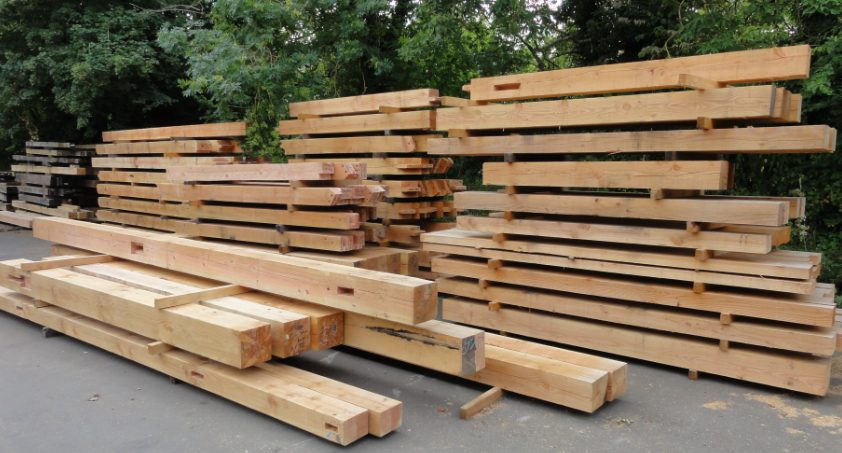Blog: timber grading
Bear with us, we know this doesn’t sound the most exciting topic for a blog but actually, it is pretty interesting (well we think so anyway!) and it’s important to know when building your own home or extension about the core structure of the build.
All the oak we use is graded – both by the sawmill and by our carpenters. You may hear us talk about the European specification (actually you’ll probably hear us say Q P A which is the grade of timber we use) timber grading. We use French oak so all our oak is graded using the European system and of Q P A grade. So what does that mean?
| Q | P | A |
| Q represents the initial of the Latin name for Oak – Quercus | The second character indicates the product. P stands for beams (B boules, S selected boards and so on) | This relates to the quality grade with A being the highest, exceptional quality. 1.2.3.4 is the decreasing quality |
So, you know what Q P A grading means, now to confuse you further…although the sawmill uses the Q P A system, our carpenters also grade the timber when it arrives at our yards using the ‘Carpenter Oak British specification’. The timber grading we have devised is far superior to the Q P A system. Here’s the comparison:
| Carpenter Oak |
European spec Q P A | |
| Live knot size | 25% | 30% |
| Dead knots | Up to 25mm | Up to 25mm |
| Slope of grain | 1:10 | 1:10 |
| Wane | Acceptable if it can be removed by a camfer | 15% |
| Sapwood | Acceptable if it can be removed by a camfer | 15% |
| Bow (over 2m) | 14mm | 16mm |
| Spring (over 2m) | 14mm | 16mm |
| Twist (over 2m) | 14mm | 1mm per 25mm width |
Successful timber frame carpentry is dependent upon the assessment, grading and orientation of each individual timber for its aesthetics and structural properties. The quality and appearance of the timber that we use in our frames will help to determine the structural integrity, durability, longevity and ultimately the value of the structures. This is why we use a more stringent system to Q P A timber grading.
Our carpenters grade all timber when it is delivered to our framing yard and each timber is checked by our carpenters during the framing process. Timbers can be, and are rejected, at any time during the framing. The cost of replacing a timber incorporated into a timber frame building is very high (especially if that building has been completed on site) and we endeavour to remove any such problems at the source.
We hope you understand a little more about timber grading and why we like to use the highest grade of timber possible. We’re always happy to discuss timber grading and specifications so please do contact us if you have any further questions.

